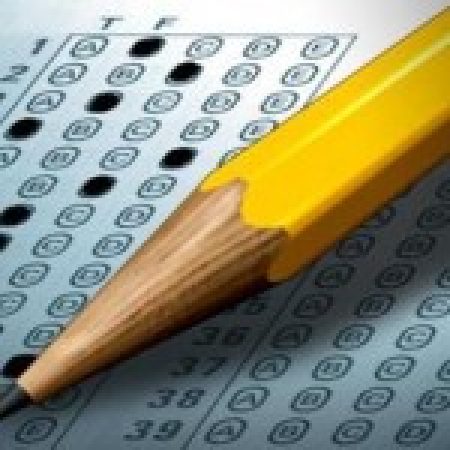A quarter century ago this month, the move to standards-based education kicked off in Charlottesville, Virginia. There, President George H.W. Bush and the man who would succeed him, Arkansas Governor Bill Clinton, led an education summit of the nation’s governors aimed at examining what the nation’s education goals should be, the role of the states and federal governments in reaching them, and how progress towards those goals should be measured.
That summit arguably inspired Virginia’s Standards of Learning system, but also began the movement toward federalizing education policy, leading to No Child Left Behind and Common Core. It set a six-pack of educational goals for the nation, announced by Bush in his 1990 State of the Union address. Four presidential administrations later, how are we doing? Here’s a quick review of where Virginia and the nation stand:
Goal One: By the year 2000 all children will start school ready to learn. The proxy for this measure this has been: “How many students are in pre-school programs?” The Annie E. Casey Foundation estimates that 46 percent of American preschoolers are attending some preschool program. In Virginia, that figure is 48 percent. But those statistics don’t measure outcomes (“Are students ready?”). There, Virginia was one of the first states to align programs in the Virginia Preschool Initiative to help children be able to “start school ready to learn.” Other states are only now implementing those kinds of kindergarten-readiness programs.
Goal Two: By the year 2000, the high school graduation rate will increase to at least 90 percent. Nationally, the four-year-graduation rate in the 2011-2012 school year (the most recent year available) was 80 percent. Virginia’s federal graduation rate for that year was 83 percent.
Goal Three: By the year 2000, American students will leave grades 4, 8 and 12 having demonstrated competency in challenging subject matter, including English, mathematics, science, history and geography. State break-outs are not available for either history or 12th grade National Assessment of Educational Progress (NAEP) reading and math exams, but comparisons can be gleaned from other grades’ reading, math and science exams. Nationally, 34 percent of 4th graders are proficient in reading; 41 percent in math. In Virginia, those percentages are 43 and 47, respectively. In eighth grade, 34 percent of students are proficient in reading and math. In Virginia, 36 percent are proficient in reading and 38 percent in math. In Science, 42 percent of Virginia students are proficient, vs. only 31 percent nationally. Those scores are hardly worth shouting from the rooftops … but they make clear that Virginia outpaces all but a handful of states in the rest of the country.
Goal Four: By the year 2000, U.S. students will be first in the world in mathematics and science achievement. In the 2011 Trends in International Mathematics and Science Study (TIMSS), eight nations or education systems ranked higher than U.S. students in 4th grade math; 6 in 4th grade science. In eighth grade, 11 systems ranked higher than the U.S.; 12 systems did so in science. While Virginia has not invested the funds necessary to conduct a full comparison, the National Center for Education Statistics conducted a 2011 study linking NAEP and TIMSS scores. In both eighth grade math and science, Virginia scored statistically higher than the United States as a whole.
Goal 5: By the year 2000 every adult American will be literate and posess the skills necessary to compete in a global economy. According to the Organization for Economic Cooperation and Development, 17.5 percent of American adults scored at or below the lowest levels of literacy. According to the Virginia Literacy Foundation, one out of five adult Virginians are considered functionally illiterate, and more than 650,000 lack basic prose literacy skills.
Goal 6: By the year 2000, every school in America will be free of drugs and violence. Nationally, the percentage of students who reported illegal drugs were offered, sold or given to them decreased from 32 percent in 1995 to 26 percent in 2011, according to the 2013 Indicators of School Crime and Safety report from the Institute of Education Sciences and the Bureau of Justice Statistics. In Virginia, that figure dropped to 24 percent. The same report demonstrated that the percentage of students who reported being afraid of attack at school dropped from 12 to four percent.
The Parent Goal: Parents are likely more concerned about college admissions tests that can have an impact on their child’s college pathway. In SAT Math, Virginia public schools outpace the nation by 11 points. In SAT Reading: 23 points. In SAT Writing: 15 points. On the other college admissions test, the ACT, Virginia public school graduates achieved statistically significant gains on math, reading and science compared with 2013 graduates, and widened the gap with other states. And in Advanced Placement exams, Virginia has the third-highest percentage of graduates qualifying for college credit.
So … how are we doing?
The 1989 National Education Summit’s goals underscore the dangers of rhetorical flourishes (“all children will …”) that are statistically impossible to meet. Although progress has been made, none of the goals outlined have been met, and the continued march towards centralizing education policy in Washington (whether by law or incentive) has not appeared to move the needle more quickly.
But Virginia, which long ago went its own way and continues to resist a move to the Common Core exams now tearing apart scores of education policymakers elsewhere, has made substantially more progress than other states.
We can’t afford to be smug. But those who wonder why Virginia hasn’t joined the rest of the country might better ask why the rest of the country hasn’t joined Virginia.






